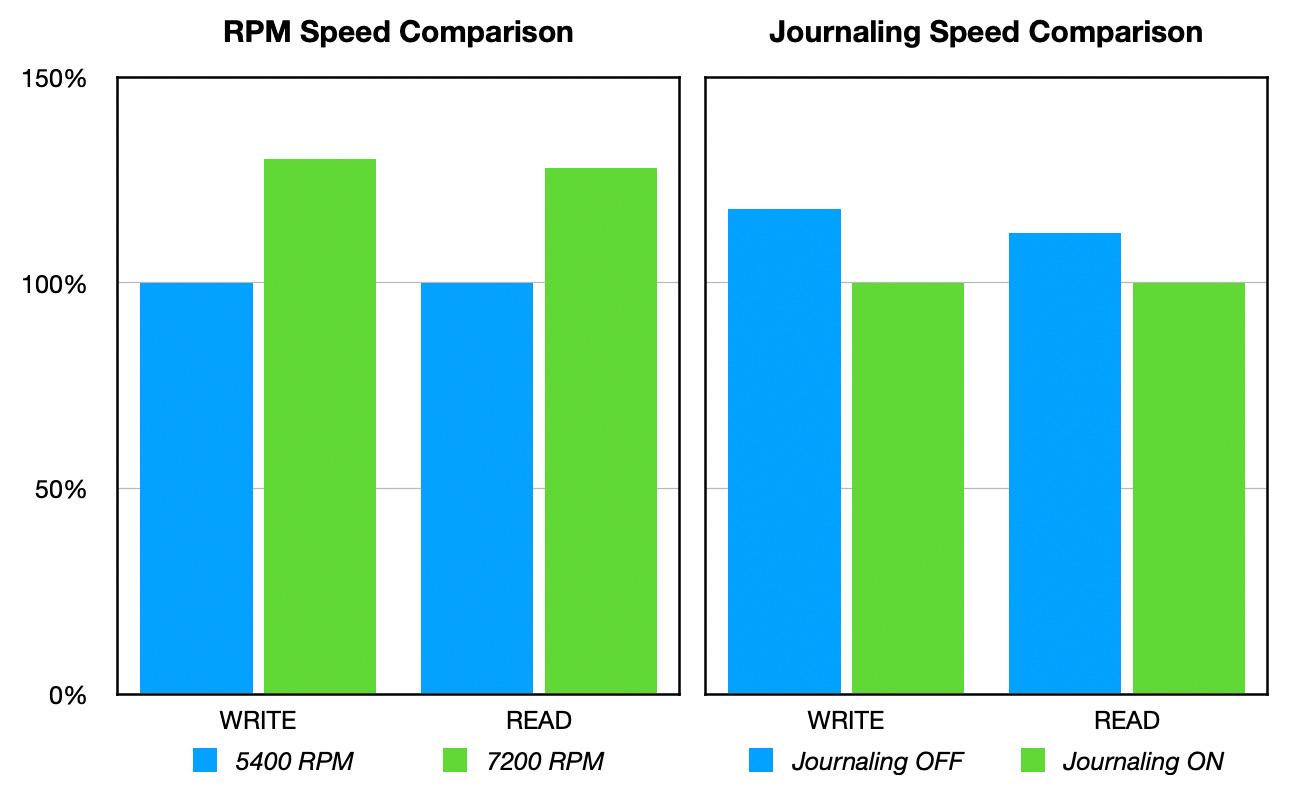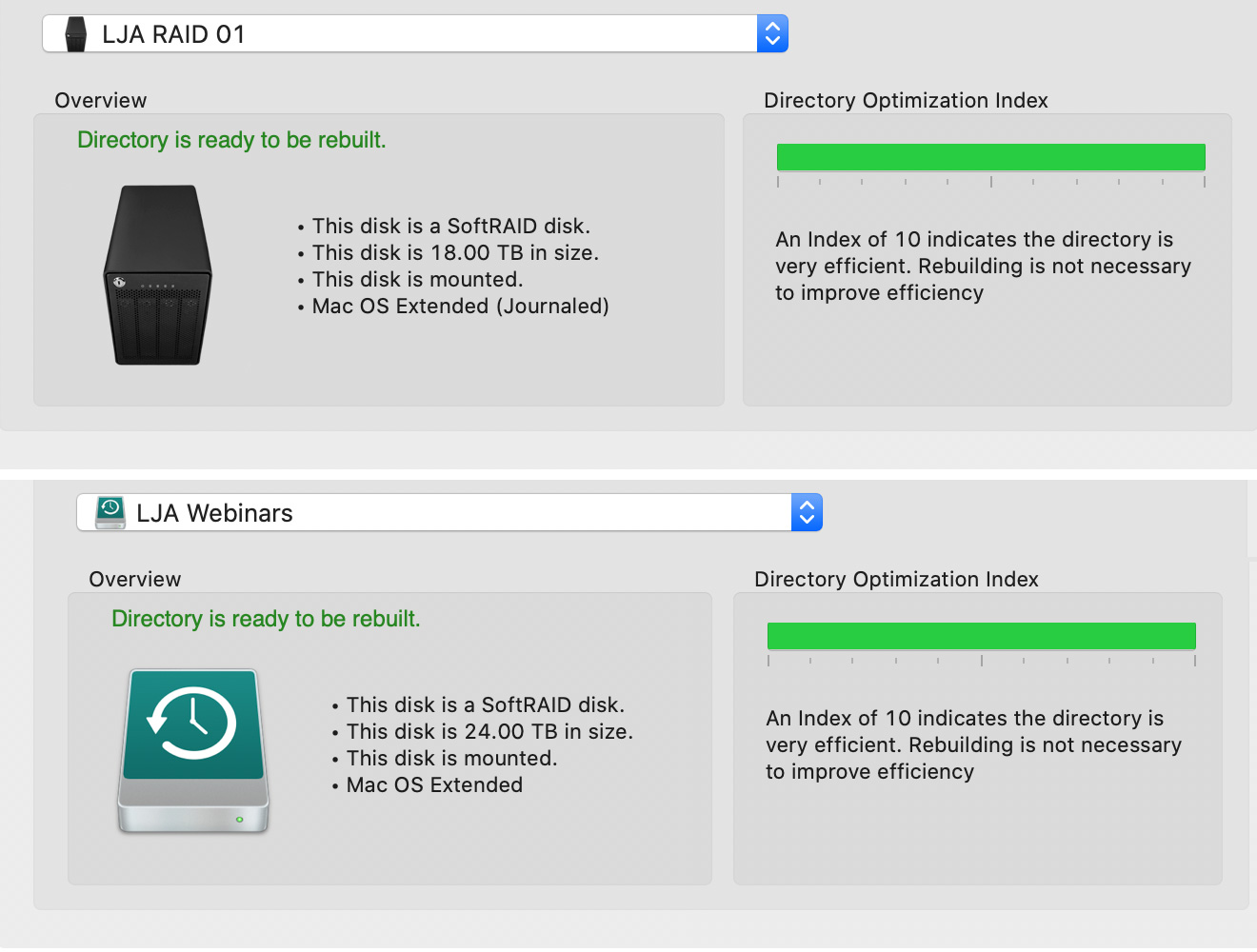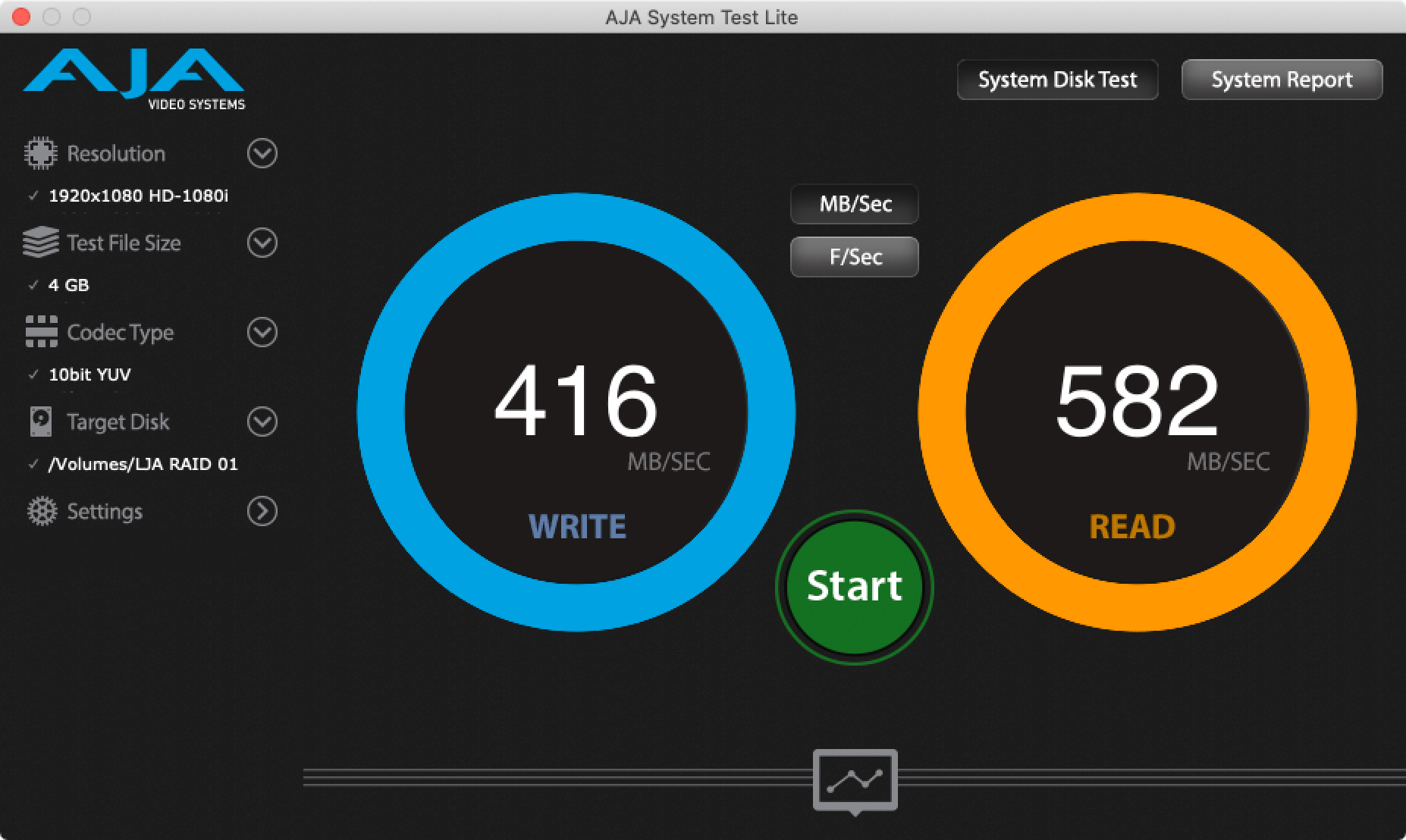 After writing my article reviewing DiskWarrior for optimizing hard disk speeds (read it here), I found myself with two identical fully-optimized 4-drive RAIDs; except one was filled with 7200 RPM drives and the other with 5400 RPM drives.
After writing my article reviewing DiskWarrior for optimizing hard disk speeds (read it here), I found myself with two identical fully-optimized 4-drive RAIDs; except one was filled with 7200 RPM drives and the other with 5400 RPM drives.
So I wondered… How much does RPM (the speed a hard drive spins) affect bandwidth (the speed with which the hard drive transfers data to and from the computer) from the perspective of video editing?
NOTE: Large files always transfer faster than bunches of smaller files, which is why I mentioned video editing.
I also discovered that one of my RAIDs was formatted with journaling turned off, which gave me a second opportunity to test how much journaling affects RAID speed.
DEFINITION: “Journaling is a Mac OS X feature that is extremely helpful in protecting the system against the problems that arises due to power failures, hardware failures and directory corruptions. When the journaling is enabled on Mac, it keeps record entries of the changes to the files present on the disk. These entries are maintained in a special type of data structure called “Journal”…. In an event of an abrupt shutdown of the system due to power outage or another failure, these journal entries make it possible to restore the system to the last known consistent state of working.” (MacintoshDataRecovery.com)
EXECUTIVE SUMMARY

A RAID 5 consisting exclusively of 7200 RPM drives is, on average, 30% faster than a similar RAID consisting exclusively of 5400 RPM drives when both have journaling turned on.
Journaling, though better for data recovery in the event of a power failure, is, on average, 12% slower for reads and 18% slower for writes.
THE TWO RAIDS

(Composite screen shot from DiskWarrior, showing that both RAID directories are fully optimized.)
RAID 1 – named “LJA Webinars” – is an OWC Thunderbay 4, filled with four Western Digital 8 TB Red drives, spinning at 5400 RPM and formatted as a RAID 5. I optimized its directory yesterday, running DiskWarrior. The drive is half-full.
RAID 2 – named “LJA RAID 1” – is an OWC Thunderbay 4, filled with four Toshiba 6 TB drives, spinning at 7200 RPM and formatted as a RAID 5. I optimized its directory yesterday, running DiskWarrior. The drive is half-full.
The test was run with both drives Journaled and disk cache turned off, which provides more reliable test results.
Tests were done with AJA System Test Lite.
NOTE: A RAID 0 would be faster, but provides no protection in the event a disk drive in the RAID dies. I like speed, but I like protecting my data even more.

(One of the test results for RAID 2, displayed in AJA System Test Lite.)
RESULTS
When both RAIDS have journaling turned on, which is safest, the 7200 RPM drives were 30% faster writing and 28% faster reading.
When journaling was turned off, which I only tested on one system, the 5400 RPM RAID was 18% faster writing and 12% faster reading than when journaling was turned on. I would expect similar results for the 7200 RPM RAID, as well.
NOTE: To make sure I was testing journaling, I tested the same RAID first with journaling on, then off. SoftRAID, the driver software for both RAIDs, makes enabling journaling easy with a single mouse click.
As you can see from the table of test results, it is fascinating to me how much variation there is in disk speeds, even when these tests are run within seconds of each other! Top read speeds varied by as much as 64 MB/second, top write speeds varied by as much as 120 MB/second! Even when no other software was running. This simply indicates that, most of the time, no storage system will consistently run at its top speed. We need to make allowances for that as we plan our storage.
SUMMARY
For video editing, 7200 RPM drives make a significant difference in speed. And, if you have good backups, you can get even more speed by turning journaling off. However, to be truthful, I have journaling enabled on all my drives, just because accidents happen.
2 Responses to Speed Your RAID: How RPM and Journaling Affect RAID Storage
Hi Larry, When investing in a new raid, would you recommend using MVNe 2 drives instead of 7200 spinning drives. due to speed and obsolesce of spinning drives. I know NVME2 is more expensive than spinning drives. thank you for your response.
xxo glo
Glo:
It depends upon your budget, your needs and how much capacity you need.
For pure speed, NVMe is AMAZING!!! Close to 3 GB/second. Stunning.
But, NVMe SSDs hold a fraction of the capacity of spinning hard disks.
If you are doing multicam work, go with NVMe. If you are creating a documentary with LOTS of media, spinning hard disks.
However, if you can afford it, the speed of NVMe will make you giggle each time you use it. And, they are very quiet.
Larry